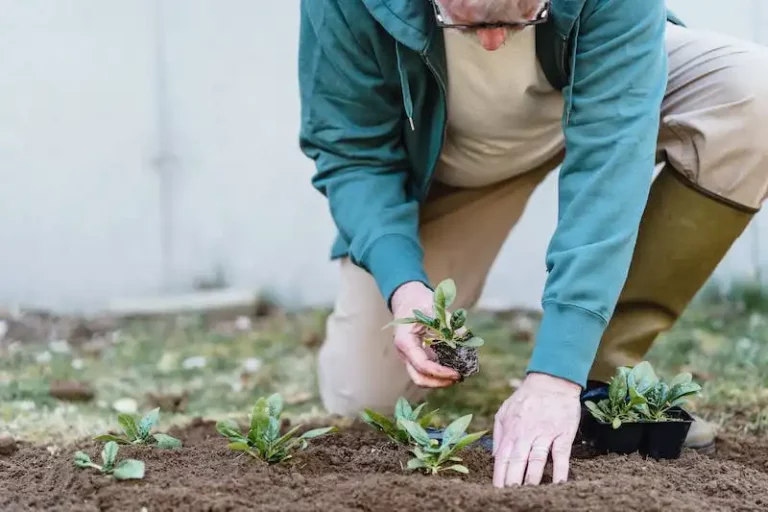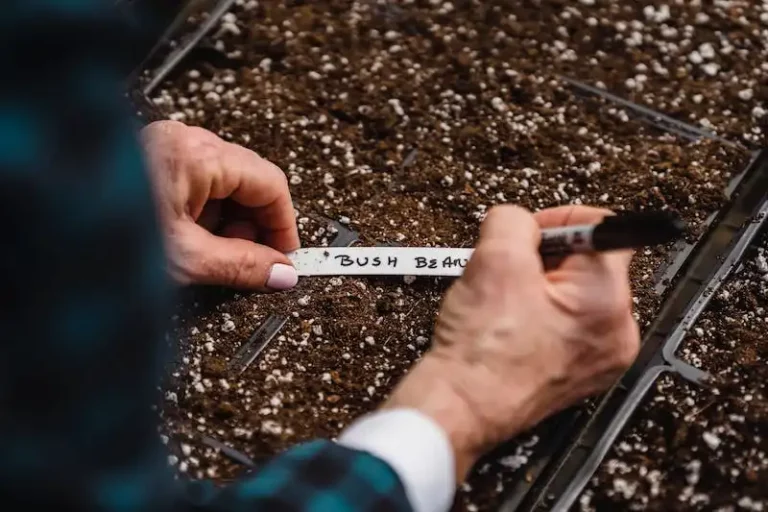If you are a strawberry lover, growing your own plants can be a rewarding and delicious experience. There are two main methods to propagate strawberries: using runners or growing from seeds. Both methods have their advantages, so let’s explore how to do it yourself!
Propagating strawberries through runners is the most common method. Runners are long stems that grow from the mother plant and produce new plants. These runners can be left on the mother plant until the following summer, or they can be transplanted to a new location. Before transplanting, make sure the runners have formed roots of their own. Once transplanted, these new plants will continue to grow and produce fruits, ensuring a bountiful harvest.
If you choose to propagate strawberries from seeds, you have the opportunity to experiment with different varieties and create hybrids. Start by collecting ripe berries and extracting the seeds, which are tiny and can be soaked in water to remove the pulp. After drying, these seeds can be planted in pots or growbags. It is worth noting that strawberry plants grown from seeds may not yield as much fruit as those propagated through runners, but it can be a great way to try out new varieties.
Regardless of the method you choose, it is important to give your strawberry plants the right conditions to thrive. They prefer a sunny location with well-drained soil. Make sure to keep the soil moist, especially during the early growing stages. By pegging or bending the runners into the soil, you can help the new plants form roots. Also, removing any blossoms that appear during the first year allows the plants to concentrate their energy on establishing strong roots.
Propagating strawberries is not only easy and free, but it also gives you the opportunity to grow your favorite variety and harvest delicious fruits throughout the summer. So why not give it a try and enjoy the satisfaction of growing your own strawberry plants?
Growing Strawberry Runners: What To Do With Strawberry Runners
Strawberries are easy-to-grow plants that can be propagated in multiple ways. One of the easiest and most cost-effective methods is through strawberry runners. These runners are small plants that are produced by the mother strawberry plant and can be easily propagated to grow new strawberry plants. The best part is that these runners are completely free!
To propagate strawberry runners, first, select the strongest and healthiest plants to allow them to produce runners. When these runners have formed, wait until they have developed a strong root system before cutting them from the mother plant. It is important to select the ones that have developed roots because they are more likely to survive when transplanted to a new location.
Once you have selected the well-rooted runners, you can either transplant them directly into the ground or plant them in containers or grow bags. If you decide to plant them in containers, make sure to provide them with enough room to develop and grow. Strawberry plants have a spreading habit, and they’ll need space to send out more runners and form new plants.
It is recommended to plant strawberry runners in early summers or late winters when the weather is cooler. This will help the plants establish themselves before the intense heat of summer or the freezing conditions of winter.
When planting the strawberry runners, make sure to prepare the soil properly by removing any weeds or old plant matter. Plant the runners at a depth that allows the crown of the plant to be just above the soil surface. This gives the plant enough room to produce new leafy growth and develop a strong root system.
After planting, water the strawberry runners thoroughly to help them settle into their new surroundings. Keep the soil consistently moist throughout the growing season, especially during dry spells. Strawberries are heavy feeders, so make sure to fertilize them regularly to ensure healthy growth and abundant fruit yields.
What To Do With Strawberry Runners
So, what can you do with all these strawberry runners that you’ve propagated? Well, you have a few options:
- Transplant them to a new location: You can transplant the runners to a new spot in your garden, filling in any gaps or creating a new strawberry bed.
- Give them away: If you have more strawberry runners than you need, you can give them to friends, family, or neighbors who are interested in growing strawberries.
- Sell them: If you have a surplus of strawberry runners, you could consider selling them at a local market or plant sale.
- Keep them as backups: If you have limited space or don’t want to plant more strawberries, you can keep the extra runners as backups in case some of your plants don’t survive.
- Start a strawberry business: If you have a large number of runners and enjoy growing strawberries, you could turn it into a small business by selling them or using them to start your own strawberry farm.
Regardless of what you decide to do with your propagated strawberry runners, they are a great way to expand your strawberry patch and enjoy an abundant harvest of your favorite fruits year after year.
What are Strawberry Plant Runners
Strawberry plant runners, also known as stolons, are a method of propagation that occurs naturally in strawberry plants. Runners are long stems that are produced by the mother plant, which extend horizontally above the ground and develop new plants at various nodes along their length.
In the winter, runners can either be removed before they form, or left in place to develop new plants. Those who do not propagate their own strawberries may choose to remove the runners to encourage the plant to concentrate its energy on producing larger fruits. However, for those who want to propagate their strawberries themselves, runners offer an easy and reliable method of obtaining new plants.
To propagate strawberries using runners, you can start by identifying a strong runner with nodes where the new plants will develop. Carefully loosen the runner from the mother plant and bury the nodes in potting soil, keeping the leaves above the surface. Make sure the newly rooted plants are watered regularly and kept in a partially shaded area.
You can also propagate strawberries from seed, although this method is less common due to the variability in the resulting plants. Strawberry plants grown from seed may not produce the same variety of fruits as the mother plant. However, if you wish to try growing strawberries from seed, it is best to start in early spring. Soak the seeds for a few hours before planting them in a potting mix and keep them watered. Once the seeds have sprouted, you can transplant them to a larger container or directly into the ground.
Overall, propagating strawberries through runners is a great way to increase your yield and grow more plants for yourself or to give away. It is a simple process that can be done throughout the growing season. By taking advantage of the natural “runners” that the strawberry plant produces, you can enjoy abundant free plants year after year.
| Propagation Method | Advantages | Disadvantages |
| Runners | Easy and reliable method | May divert energy from fruit production |
| Seed | Opportunity for new varieties | Resulting plants may not match mother plant |
Whether you choose to propagate strawberries through runners or seed, both methods have their benefits and drawbacks. Consider your goals and preferences when deciding which method to use. Happy propagating!
When to Cut Strawberry Runners
Strawberry plants produce runners as a way to reproduce themselves. These runners are long stems that grow out from the main plant and develop into new plants. It’s easy to propagate strawberries by rooting the runners and planting them elsewhere, ensuring a bountiful harvest of delicious fruits throughout the growing season.
Early Summer: Time to Propagate
When strawberry runners start to grow, usually in early summer, it’s the perfect time to start propagation. By cutting the runners, you can concentrate the plant’s energy on producing more fruits instead of developing new plants. This gives you the opportunity to expand your strawberry patch or share the runners with friends and family.
How to Cut Strawberry Runners
To cut strawberry runners, select the ones that are well-rooted and have a few sets of leaves. Use clean gardening shears or scissors to cut the runner between the mother plant and the newly formed plantlet. It’s essential to make a clean cut to avoid damaging either plant. Once cut, the newly formed plantlet can be planted in a new location or potted up to grow new strawberry plants.
If you don’t want to propagate the runners, you can leave them to grow and root themselves in the existing strawberry patch. However, this can result in overcrowding, which may lead to lower yields and disease susceptibility.
When to Harvest or Cut Runners
If you’re growing strawberries in containers or growbags, it’s recommended to remove the runners to prevent overcrowding. On the other hand, if you have plenty of space in your garden and want to expand your strawberry patch, you can let the runners root in the ground.
When it comes to propagating strawberries, it’s best to cut the runners early in the summer when they are actively growing. This ensures that the new plants have enough time to establish their roots before the onset of winter. Strawberry plants grown from runners will typically produce fruit in their second year.
Propagating Strawberries from Runners
Propagating strawberries from runners is a simple way to grow new plants. Once the runners are cut, carefully separate them from the mother plant and plant them in well-prepared soil. Make sure to keep the crown of the plant above the soil surface while their roots get established.
It’s worth noting that not all strawberry varieties produce runners. Some varieties, known as everbearing or day-neutral strawberries, are not strong runners and may not propagate well in this way. Instead, they can be propagated through division or by starting new plants from seeds.
In conclusion, cutting strawberry runners is an important step in strawberry propagation. By selecting the right runners and knowing when to cut them, you can ensure the health and abundant fruit production of your strawberry plants for years to come.



